San Paolo Stadium, Napoli. July, 1984. The city burst out in euphoric raptures as the most shocking football transfer of the twentieth century unfolded right before the world. Diego Maradona, widely regarded as the best footballer of that time, joined the local team SSC Napoli for a world record fee of € 12 million, a transfer that would have cost about € 168 million today.
During his time at Barcelona, Maradona had already become a sensation. His mazing runs through the muddy pitches, stocky thighs, sly smile and immense passion for the Argentina shirt were facts already well known and well documented. Maradona's time at the Nou Camp, however, left a bitter taste of unfulfilled potential that most notoriously manifested itself in the Copa del Rey final against Athletic Club Bilbao that ended more like a mixed martial arts event than as a game of football.
But Maradona had done enough to persuade the owners of Napoli that he was the right candidate to lead the Neapolitans to much-coveted glory. In reality, it was the other way round, though. During his final months at Barcelona, the Argentine’s relationship with the Blaugrana president Josep Lluis Nunez hit an all-time low.
In his book Maradona: The Hand of God, Jimmy Burns observed:
“The tensions between the two men continued throughout Maradona’s stay at Barcelona, always simmering and on occasion reaching a very public boiling point…[Maradona] would always find it difficult to come to terms with the cold realities of commercial football to which a part of himself was inexorably linked.” (Burns, 2010, pp. 110-111)
Maradona and Napoli - a marriage made in heaven

Therefore, Maradona was always looking for a way out of the Nou Camp, and his move to Italy came as a relief as much to himself and his family as it did for the Napoli president Corrado Ferlaino who hailed Maradona's signing at the time as one of his biggest ever coups. Maradona himself was flustered by the unusual fanfare surrounding him, something that would become a perennial theme throughout his time in Napoli.
Although an outsider, Maradona quickly endeared himself to the Napoli faithful, not just through his immense footballing talent but also because the average Neapolitan could relate themselves with the diminutive Argentinian.
To fully appreciate this aspect of the Napoli story, we must first understand the heartbreaking history of the city of Napoli and that of the city's underachieving football club. Unlike its more illustrious, affluent northern counterparts like Milan, Turin, Florence, Genoa or even the historic city of Rome, Napoli was for a long time the poorest part of Italy and the most detested city in the country. Napoli's football club, SSC Napoli, was viewed as an extension of Neapolitan poverty, hardship and underachievement.
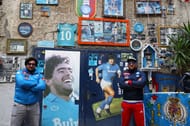
When Maradona arrived at Napoli, the people of the city saw in him a possibility of resurgence, a sign of not only their beloved football club embarking on a successful journey but a metaphor for success in their own lives. This adds a compelling narrative to the Diego Maradona story and is a part of his legend.
A man who, apart from being a great footballer himself, was also the people’s player; the representative of the masses, the working class, the poor. Maradona’s father himself worked as a manual labourer in the slums of Villa Fiorito in Argentina, where Maradona grew up. So, for the people of Napoli, Diego and Maradona were two sides of the same coin.
Diego is the average Neapolitan: poor, humble and an obedient son. Maradona on the contrary is the alter-ego: a charismatic celebrity, an icon for the ages, a living demigod. For the Neapolitans, Maradona meant much more than a football player. He was an epitome of aspiration, a symbol of fulfilled dreams.
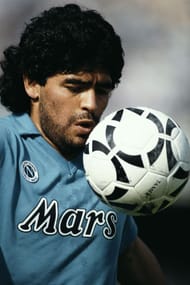
The rest of the world however, did not take kindly to Maradona’s arrival at Napoli. One French news anchor remarked:
“The poorest city in Italy, and maybe one of the poorest in Europe, therefore buys the most expensive player in the world”.
The Italians from the north were however much more insensitive with their words. During a match at the Stadio San Paolo on 3 November 1985, Diego Maradona, then only twenty-five, was horrified at the banners bandied about by the Bianconeri supporters who arrived from Turin. “Apartheid” one banner read. Another read “Ciao Colerosi”, meaning “Hello cholera sufferers”. “Naples, sewer of Italy” proclaimed another such banner.
In the 2019 Asif Kapadia documentary Diego Maradona, a footage shows the Juventus fans chanting stray dogs to run away because the people from Napoli were dirtier still:
“Even the dogs run too, the Neapolitans are coming. Sick with cholera. Victims of the earthquake. You never washed with soap. Napoli shit! Napoli cholera! You are the shame of the whole of Italy. Neapolitan, work hard because for Maradona you will have to sell your ass too!”
In the chant, there is a reference to Mount Vesuvius, located in the Gulf of Napoli which erupted one day in AD 79 that led to the submergence of Pompeii. As can be seen therefore, Napoli has always been an unfortunate city in the north Italian consciousness, often associated with disasters, misfortune, poverty and dirt. This antagonism also extended to the Napoli football club and its supporters, who themselves were obviously Neapolitans. Diego Maradona would later say about the issue:
“The Neapolitans were the ‘Africans’ of Italy. The ‘Unwashed’, the ‘Peasants’. We went up north and wherever we went, they put up banners that said ‘Wash Yourselves’. It was disgusting. They were all racists. I felt as though I was representing a part of Italy that counted for nothing.”
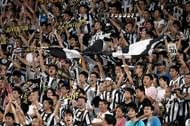
Similarly, and quite understandably, there has also been a feeling of hatred, a desire to exact revenge against Juventus from a Neapolitan standpoint. In Maradona, Napoli finally had their Messiah, their instrument of redemption and an influential presence, both in the SSC Napoli dressing room and in the city of Napoli that helped them regain their confidence and stature. This process of ‘pay-back’ began with Napoli’s 1-0 victory against Juventus, with Maradona scoring the winning goal. In truth, it was much more than a sporting victory, with Maradona’s goal having a perceptively symbolic significance. Maradona responded to a journalist’s question, “What colour is today’s goal?” with the following words:
“The colour of today’s goal is blue, blue for the people of Napoli because no one who doesn’t live in Napoli can imagine all the stuff people were saying about us during the week. For this reason, this goal and this victory have been deserved by the people.”
Maradona’s years at Napoli were the most fertile years of his football career, with honours both domestic and international being achieved. Maradona became the first player in the history of SSC Napoli to inspire the club to the Serie A title in 1987. Maradona and Napoli won the top-flight title again in 1990. These two titles remain Napoli's only Scudetti till date, and in helping the club achieve so, Maradona paved the way for the reconstruction of the city’s image.
The Napoli football club itself was much indebted to the Argentine, who had by then become a World Cup winner. The UEFA Cup win in 1989, where Napoli overcame VfB Stuttgart in the final, absolutely cemented Maradona’s place in Napoli folklore.
Maradona’s biggest legacy was to provide a backbone to Napoli. Although Napoli haven't won another league title or a continental tournament since Maradona's departure in 1991, the club has continued to be a resurgent force, despite battling relegation along the way.
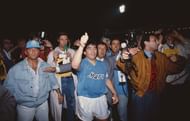
Cristiano Ronaldo's arrival at Juventus - akin to Maradona's at Napoli:

Fast forward to Turin, 2018. Five-time Ballon d’Or winner Cristiano Ronaldo made a shock move to Juventus for a fee of €112 million. It was a Maradona-like coup for the Bianconeri who snapped up arguably the best player in the world, much to the world’s disbelief.
Ronaldo’s transfer to Italy after a stint in Spain sounds eerily similar to Maradona’s own journey. Both were the best players in the world during their transfers, and both created a worldwide sensation with their moves to Italy. The two players are also similar in nature: both Maradona and Cristiano Ronaldo have an unquenchable thirst to win and succeed, with defeat never an option. Jimmy Burns describes Diego Maradona as:
“The concept of defeat is not one that Diego Maradona can handle easily. Ever since he entered the public consciousness as a young magician showing off his bag of footballing tricks on TV, he has had it ingrained in his mind that he is the best. By the time he gets to Italy, his self-image, fuelled by the media and his fans, pitches him well beyond the normal aspirations of most mortal sporting heroes.” (Burns, 2010, p. 205)
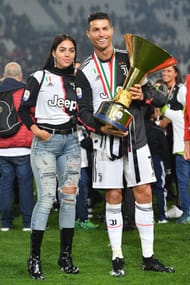
The same remarks can also be made about Cristiano Ronaldo. Along with Lionel Messi, Ronaldo has dominated the world of football for more than a decade. If Messi was similar to Maradona in terms of nationality, stature and playing style, the Portuguese superstar shared Maradona's passion, winning-mentality and charisma.
Ronaldo, like Maradona, considers himself to be the best player in the world, at least in his mind, as he proclaimed in an interview. There are lots of similarities between Maradona and Ronaldo. But while Maradona chose a poor struggling side with no championship titles, Ronaldo moved to the serial winners of Serie A.
While Maradona was tasked with the responsibility of winning Napoli some honour and prestige, Ronaldo was brought by the Bianconeri to deliver the ever-elusive Champions League trophy.
However, while Maradona arrived fresh as a twenty-four-year-old player with hunger and desire to win, there was a feeling that Ronaldo’s best days were already behind him when he arrived at Juventus. At the age of thirty-four, having won everything club football has had to offer, and winning Portugal’s first-ever European Championship in 2016, Ronaldo had the world at his feet.
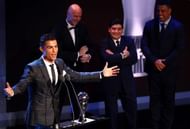
Yet in his very first season at the Turin club, Ronaldo could not deliver the Champions League title. Although he put in a memorable display against Diego Simeone’s Atletico Madrid, scoring a hat-trick in a comeback 3-2 victory in the Round of 16 second leg, Ajax eliminated Juventus in the quarter-final stage.
Ronaldo did win the Serie A, but missed out on the Coppa Italia title to Lazio. It must be remembered that although the Portuguese won the league, SSC Napoli finished second. In the season before Ronaldo's arrival in Italy, Napoli finished in second place as well.
In spite of Inter Milan’s best attempts, Napoli have always managed to pip them to second place in recent years. Although they have not managed to dislodge Juventus from the top spot, Napoli has managed to inflict minor pains to the Bianconeri. For instance, in 2014, Napoli beat the Turin club in the Supercoppa Italiana.
More recently, Napoli have been breathing down Juventus' necks. Since the 2010-11 season, Napoli have never finished outside the top five in the Italian Serie A, and have been runner- ups on four different occasions.
On 18 June, 2020, Napoli again upset the odds by beating Juventus in the Coppa Italia final in Rome. It was a game in which Ronaldo virtually disappeared from, with Italian legend Francesco Totti criticising the Portuguese legend for not even being able to hold the ball and dribble.
Ronaldo's only noteworthy opportunity came in the first half when Paulo Dybala, capitalising on some sloppy Napoli defending, passed the ball to Ronaldo who tested goalkeeper Alex Meret with a low-driven shot. Another such moment came when Ronaldo was put through on goal once again by the impressive Dybala but Meret once again thwarted the opportunity by rushing out quickly off his line.
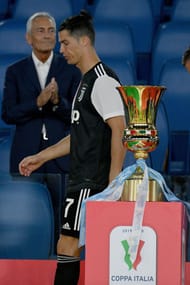
Throughout the match, Maurizio Sarri’s team looked slow and sluggish in possession; their passes lacking in tempo and incisiveness. Apart from a few half chances, Juventus never really looked like threatening Napoli.
Napoli themselves could have been ahead in the first half had Lorenzo Insigne’s spectacular free kick not ricocheted off the crossbar. They would not mind that though, after claiming a sweet victory on penalties against their historic northern rivals.
For once, as they did many years before, the bragging rights would be theirs. Despite having one of the greatest players in their ranks, Juventus looked toothless against Napoli. Perhaps their old insults to the generations of Neapolitans came back to haunt them in the form of a vicious ancestral curse.
